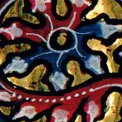Call for Proposals
The development of the digital humanities sphere over the last two decades has opened up stimulating perspectives in numerous areas of specialised research, as well as for the diffusion of the results obtained among the general public. An increasing number of research programmes involve computerised treatment of textual and iconographic corpora. The exploitation of the data and metadata they produce represents a major challenge, attested by the ongoing development of high performance indexing tools and formats.
Challenges also exist upstream of data indexing. Researchers are constantly obliged to acknowledge the inadequacy between current digital typography and many of the graphic forms contained in ancient documents. Still in its youth, software technology is as yet incapable of providing satisfactory means of transcribing such documents: prior to indexing, the digital data drawn from ancient texts is rarely coherently encoded. If the Unicode Standard aims at providing a universal solution for text encoding, covering all written languages, ancient as well as modern, it presently falls very short of the mark. By defining the character as a purely linguistic entity, Unicode passes over a large number of graphic variants, ligatures and abbreviations, which often convey precious information – geographical origins, states of language, specific practices, etc. Numerous areas of research (the study of orthographic practices, the indexing of monetary captions, the transcription of epigraphical documents, the analysis of ancient typographical materials, the cataloguing of manuscripts and printed texts...) require characters currently unavailable in digital coding. While the work done by the MUFI (Medieval Unicode Font Initiative) has partly remedied the problem in the specific domain of medieval manuscripts, a great many signs still need to be identified, encoded and designed: – The identification of characters required for the computerised treatment of each object of study is rarely fully carried out. The neglected characters need to be listed using strict definitions and taking into account the distinction between significant glyphs and simple graphic variants. – The coding of currently neglected characters must be universal. The durability of the digital data produced depends on the harmonisation of the coding systems used. – The design of the characters – i.e. the creation of digital font enabling newly encoded characters to be displayed and printed – is only the tip of the iceberg; it nevertheless represents an essential task. Despite twenty years of constant developments in the digital humanities field and, in particular, the decisive progress made by the MUFI, the encoding of ancient scripts is still extremely problematic. With a view to gaining a comprehensive view of the current situation and future perspectives, the CESR (Centre for Advanced Renaissance Studies, Tours) and the IRAMAT (Institute for Research on Archaeomaterials, Orleans) jointly propose to bring together diverse specialists (researchers in literature, the humanities, social science; professionals working in libraries and museums, as well as in the graphic arts and computing) for a two day study session programmed to take place at Orleans, on the 21st and 22nd May 2013. Themes The talks will be thematically grouped. The following list is purely indicative (the definitive list will be determined by the subjects of the accepted propositions): – Ancient Characters as Vehicles of Knowledge. Reflection on the semantic value of glyphs employed in ancient documents: what information do they convey? How can this information be extracted and represented using semantic indexing systems? – State of the Question (1). Coding and Fonts: What kind of Computer Technology for Ancient Scripts? Presentation of the operational modes and limits of current coding and font formats. – State of the Question (2). Research Programmes: Results and Aims Presentation of recently completed and ongoing research programmes involving computerised management of ancient scripts. – Coding or Marking? Where is the boundary situated between the encoding and the marking of texts in information transmission? – What and How to Transcribe? Media Diversity, Graphic Variations and States of Language Reflections on the definition of coherent transcription norms capable of catering to the specific needs of different projects. What is a “diplomatic edition” of a text in the digital era? – Character Requirements Projects dedicated to inventorying neglected characters with a view to the study or cataloguing of particular objects (manuscripts, printed texts, epigraphical sources, numismatic objects, etc.). – After Codes: Fonts. Existing and Neglected Characters Overview of the “character requirements” question. Presentation of recently designed fonts, designs being worked on and potential models for the management and coding of graphic variants. The talks may be given in French or English and must not exceed 30 minutes. The proceedings of the study days will be published online with free access. All meals will be covered by the hosting institutions. Transport and lodging expenses will need to be covered by the participants' own laboratories. Proposals should be sent by email to Rémi Jimenes (remi.jimenes[arobe]univ-tours[point]fr) and Guillaume Sarah (guillaume.sarah[arobe]cnrs-orleans[point]fr) before the 10th January 2013. They should include a provisional title and a half-page summary. |


